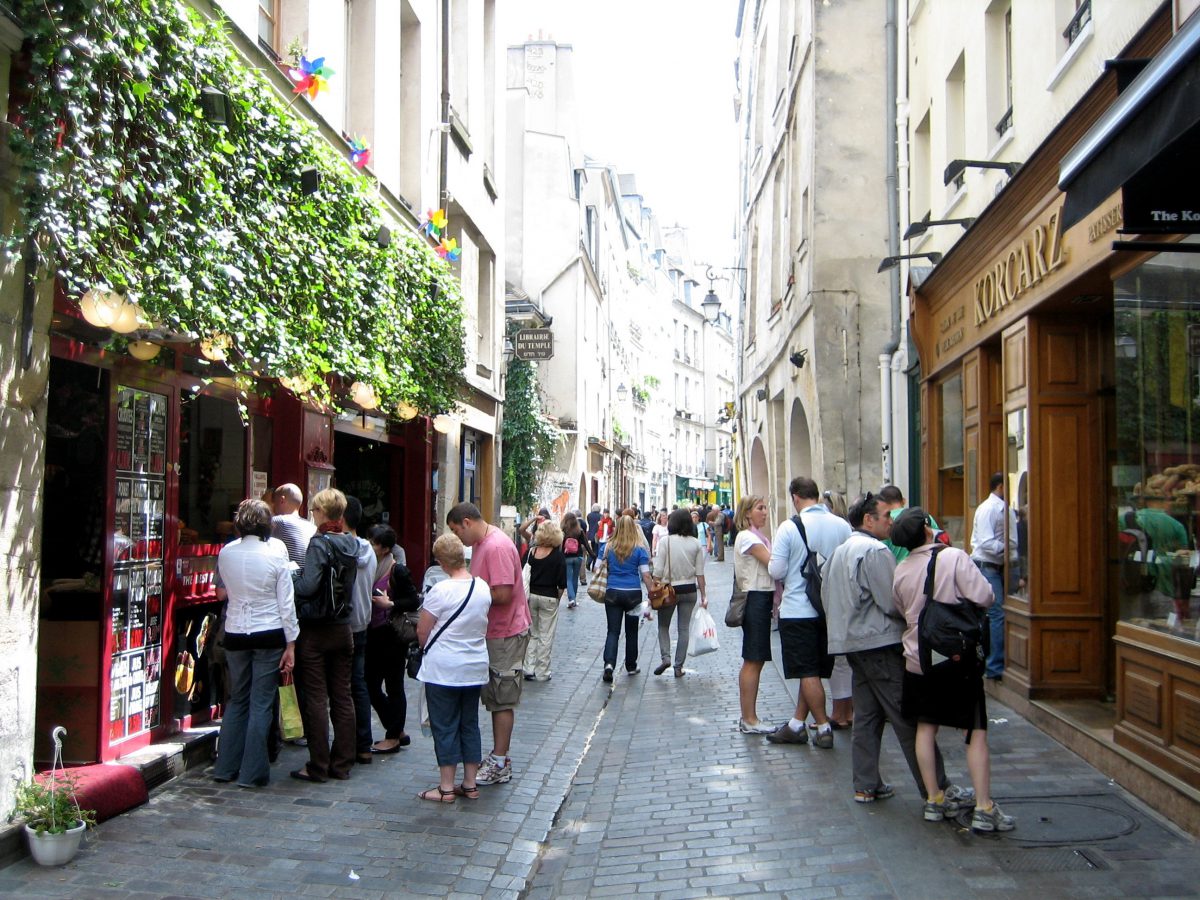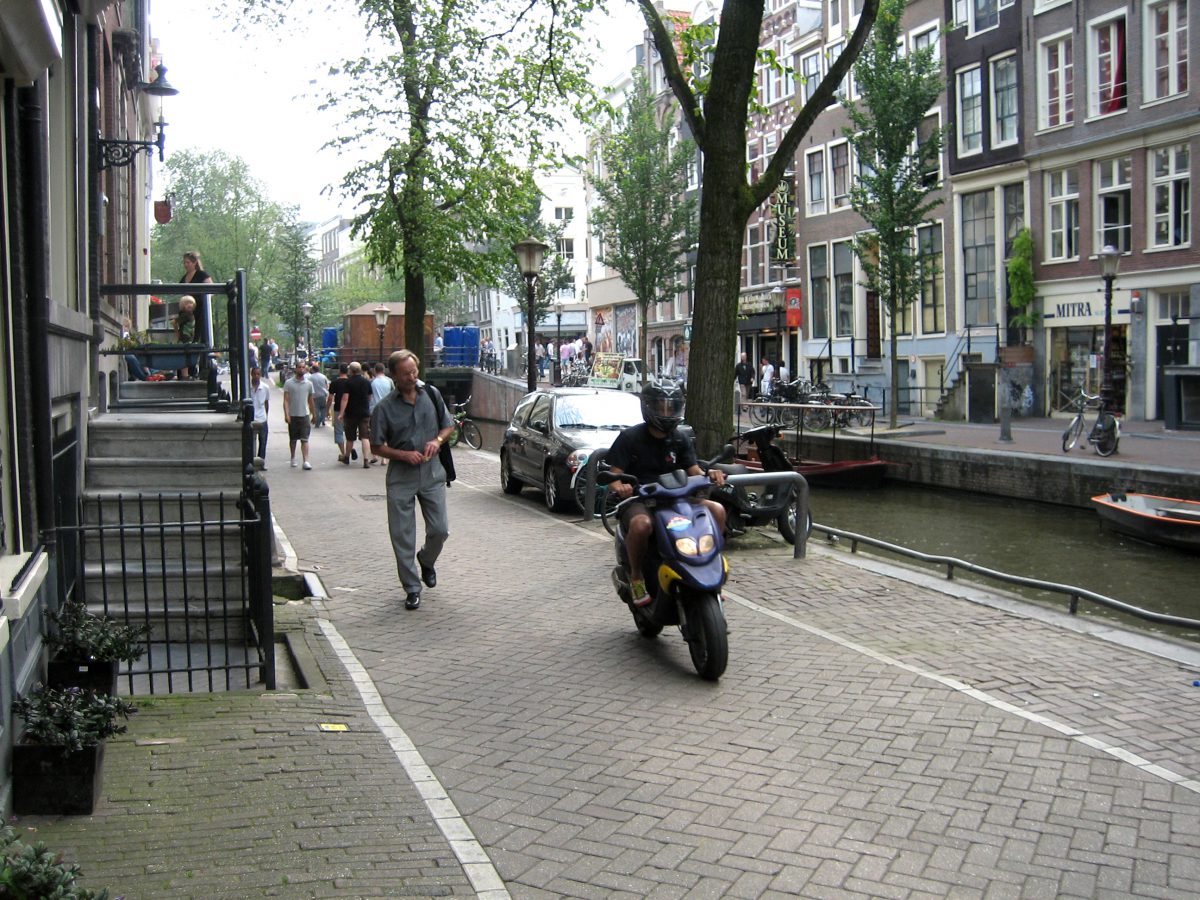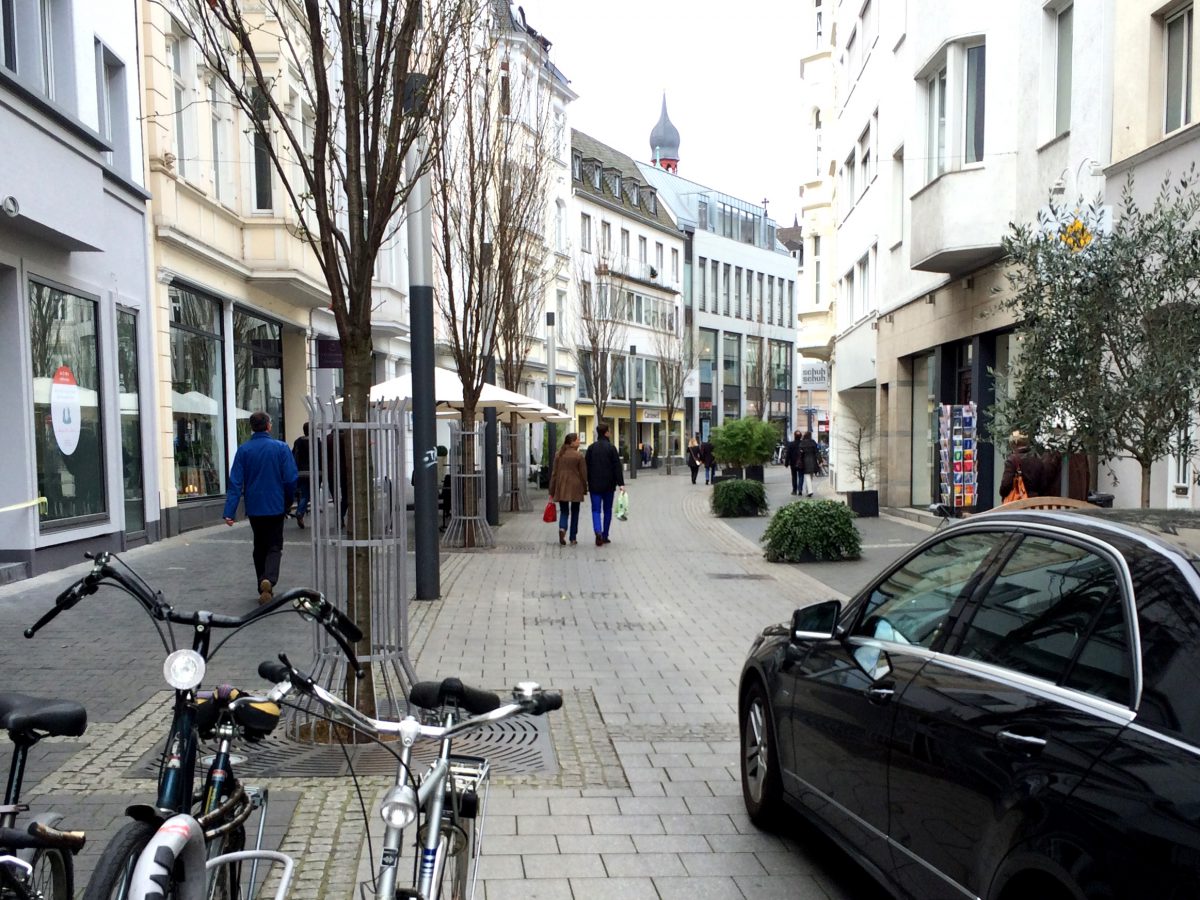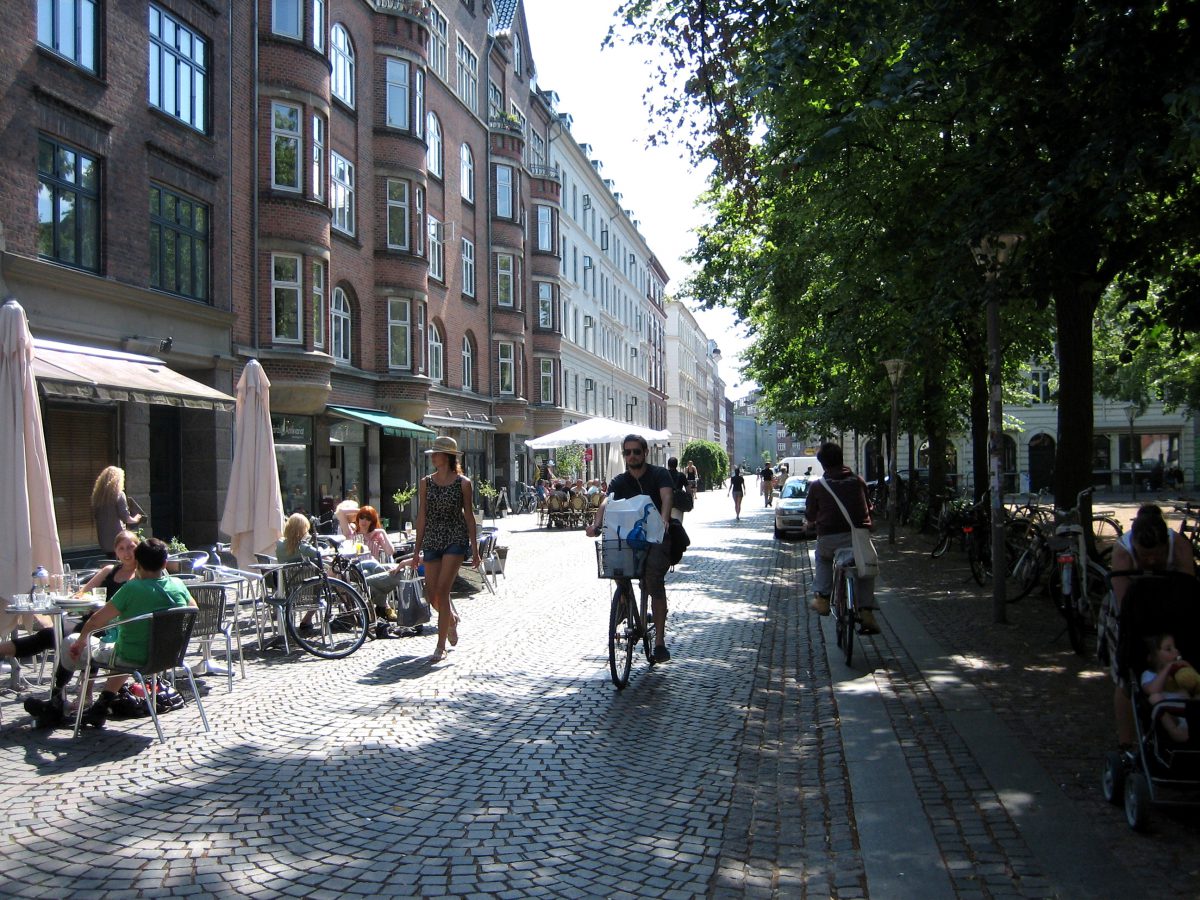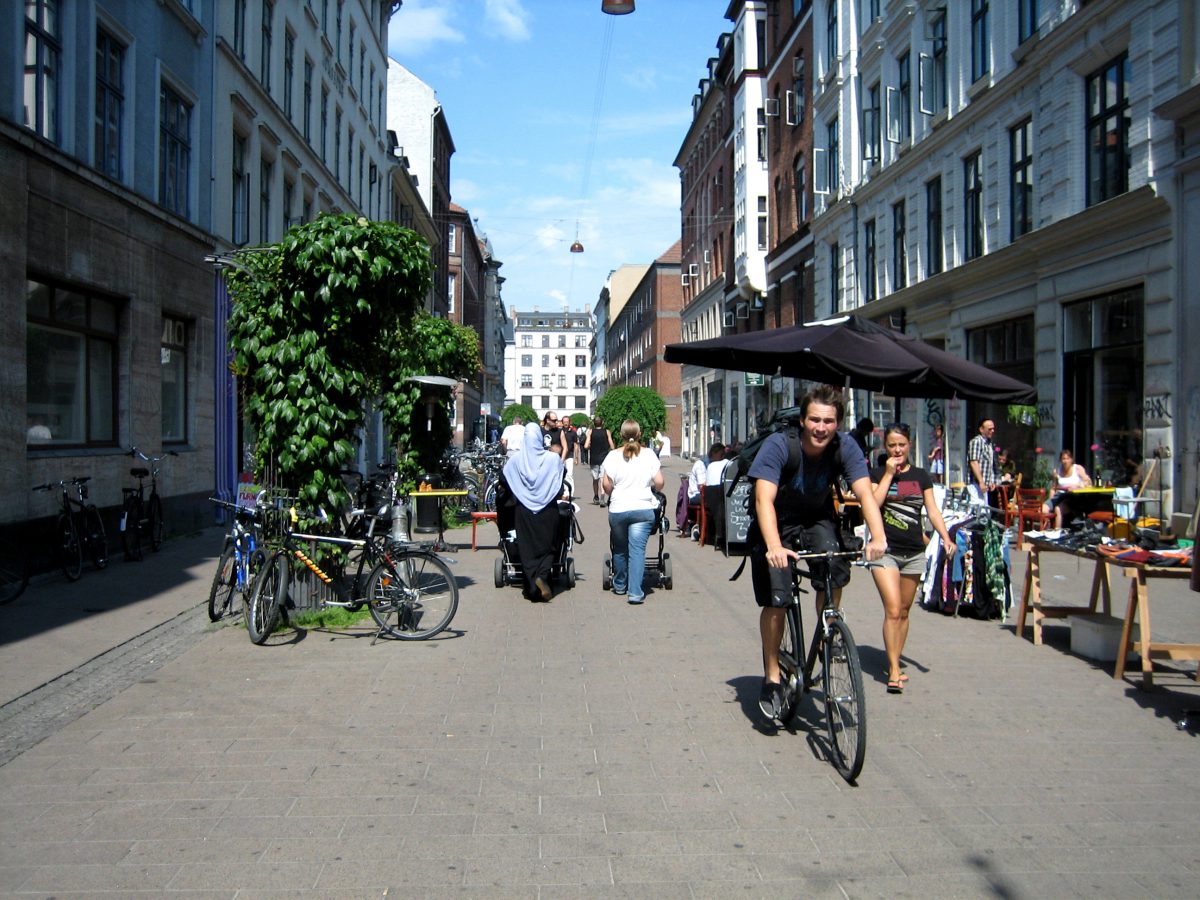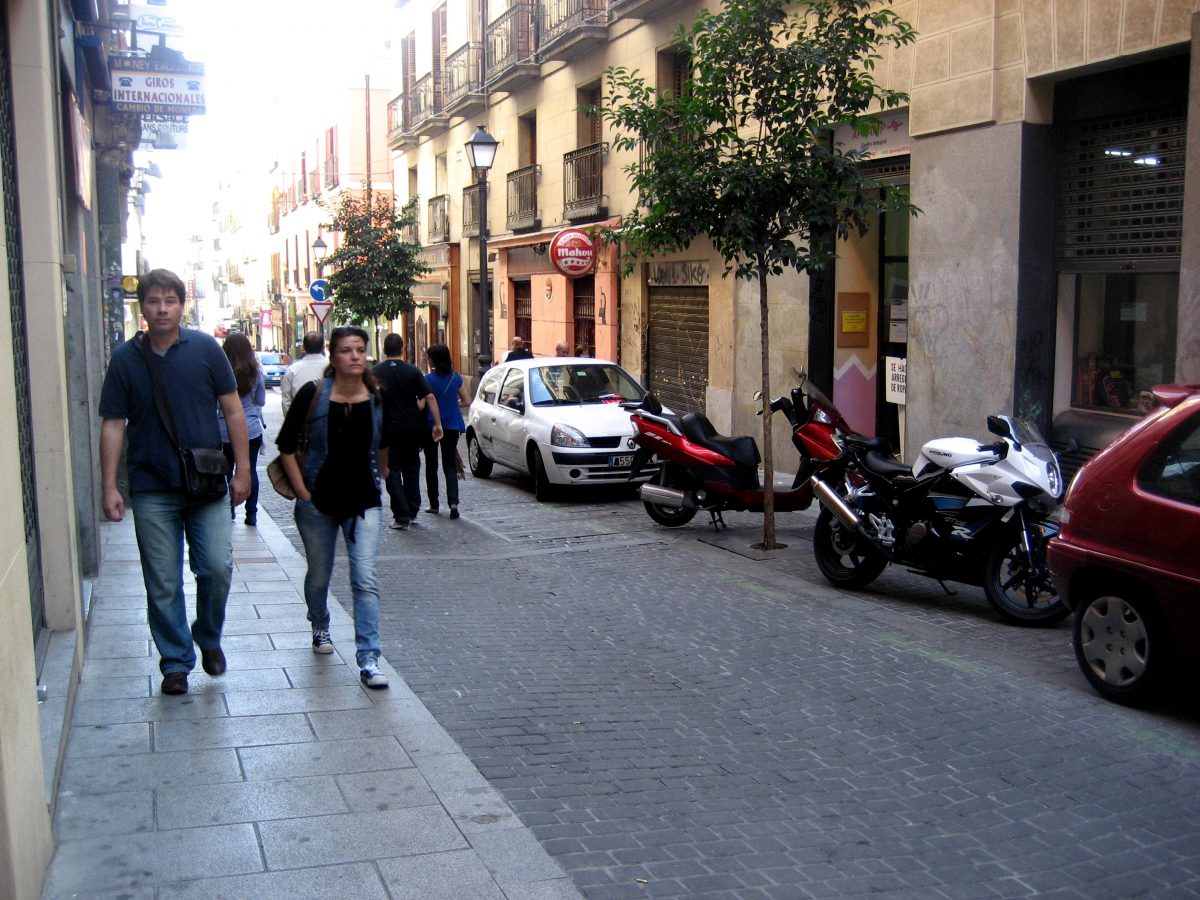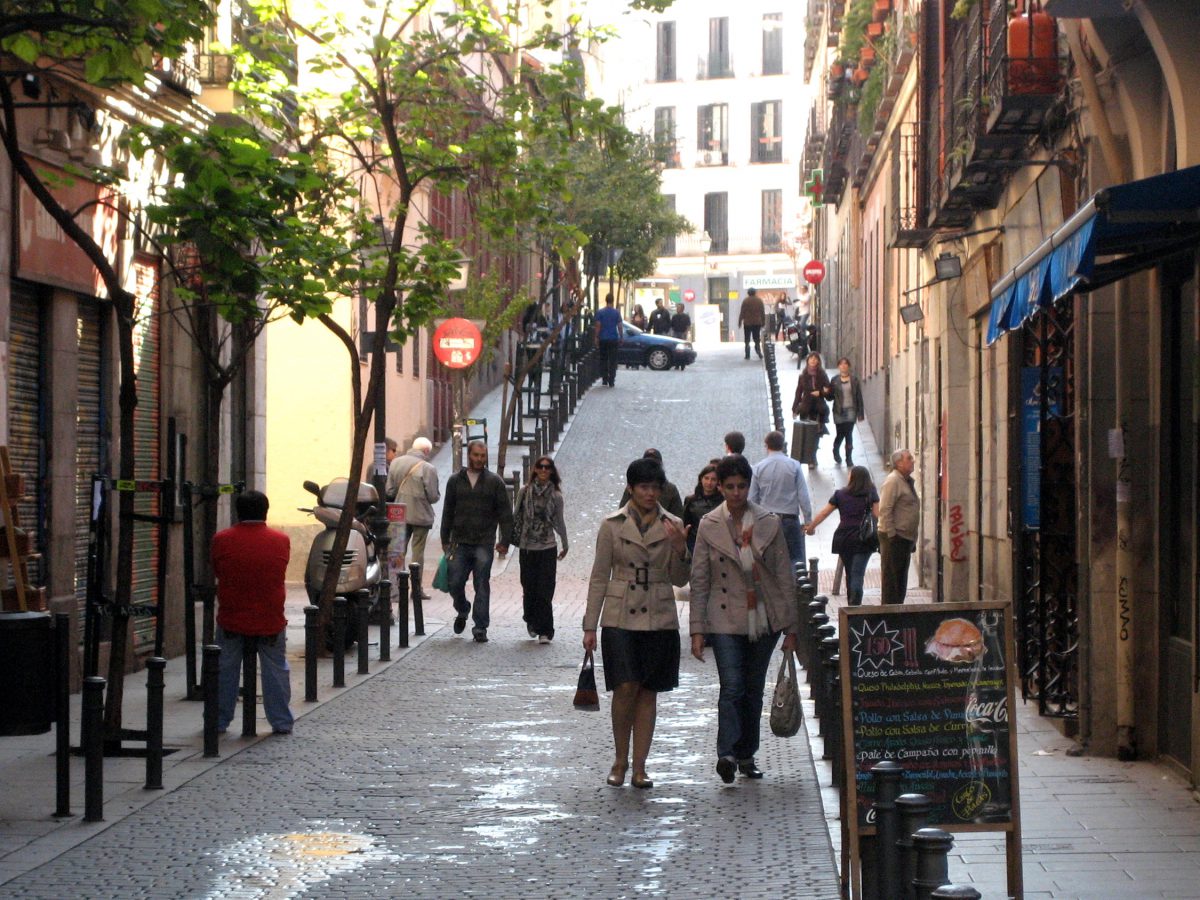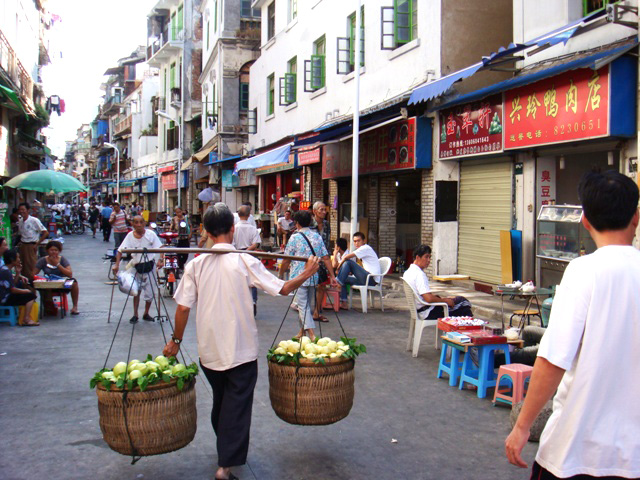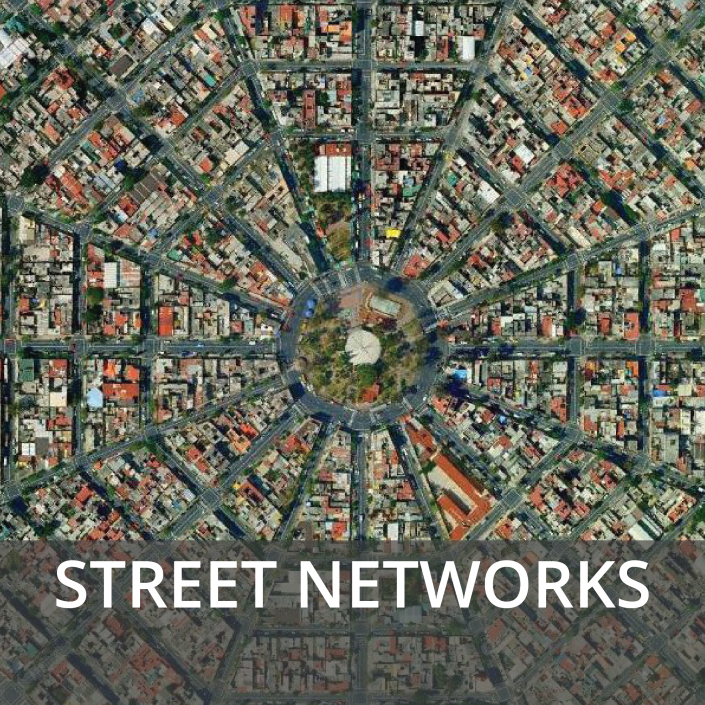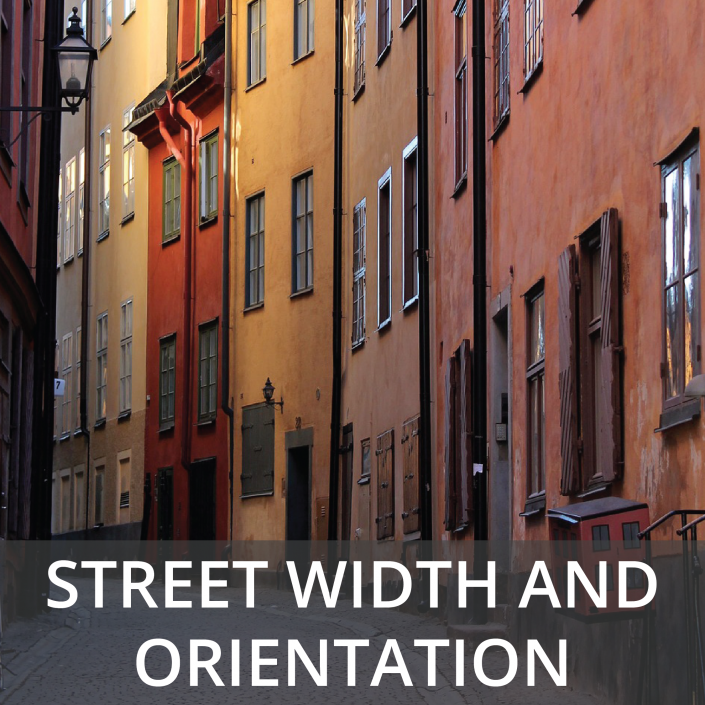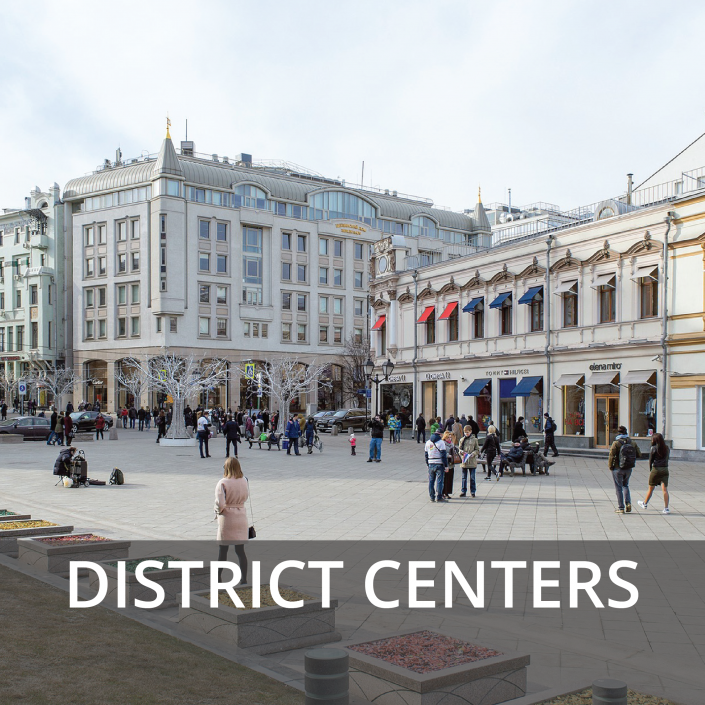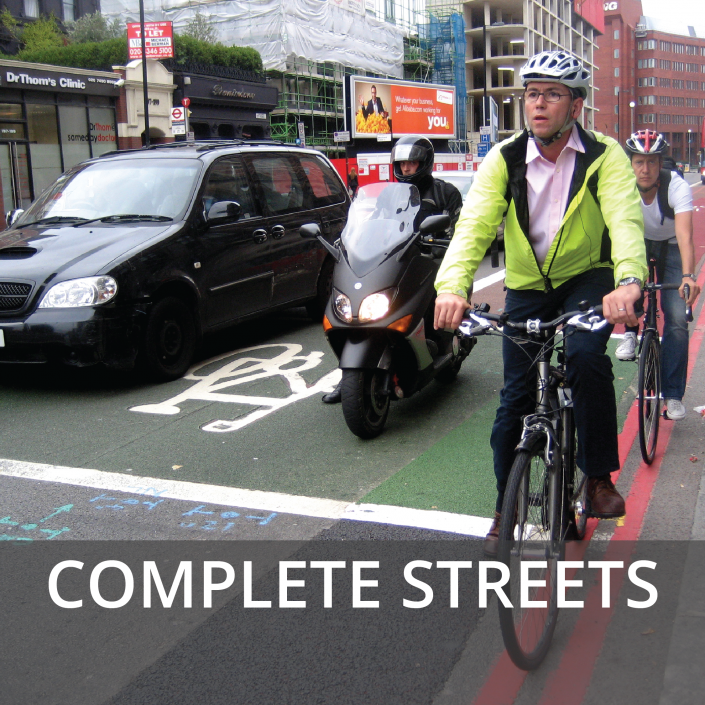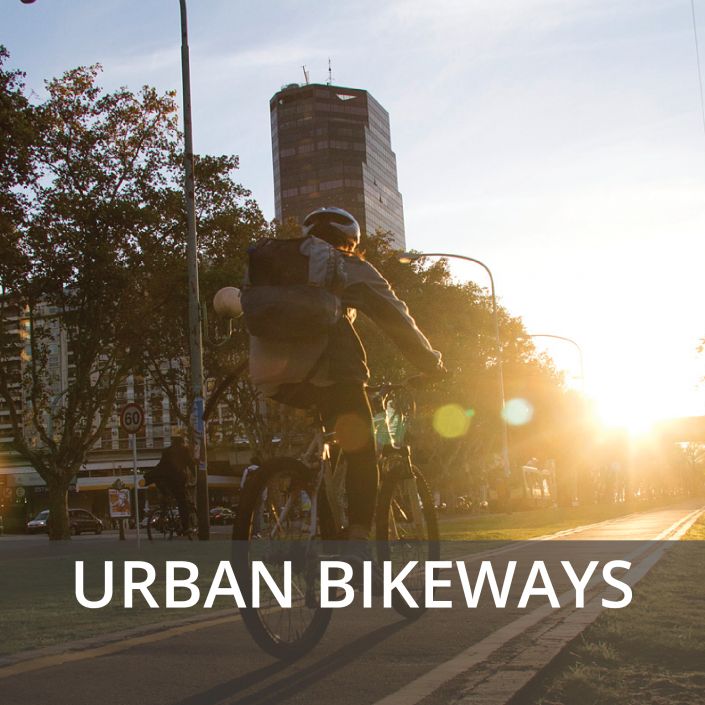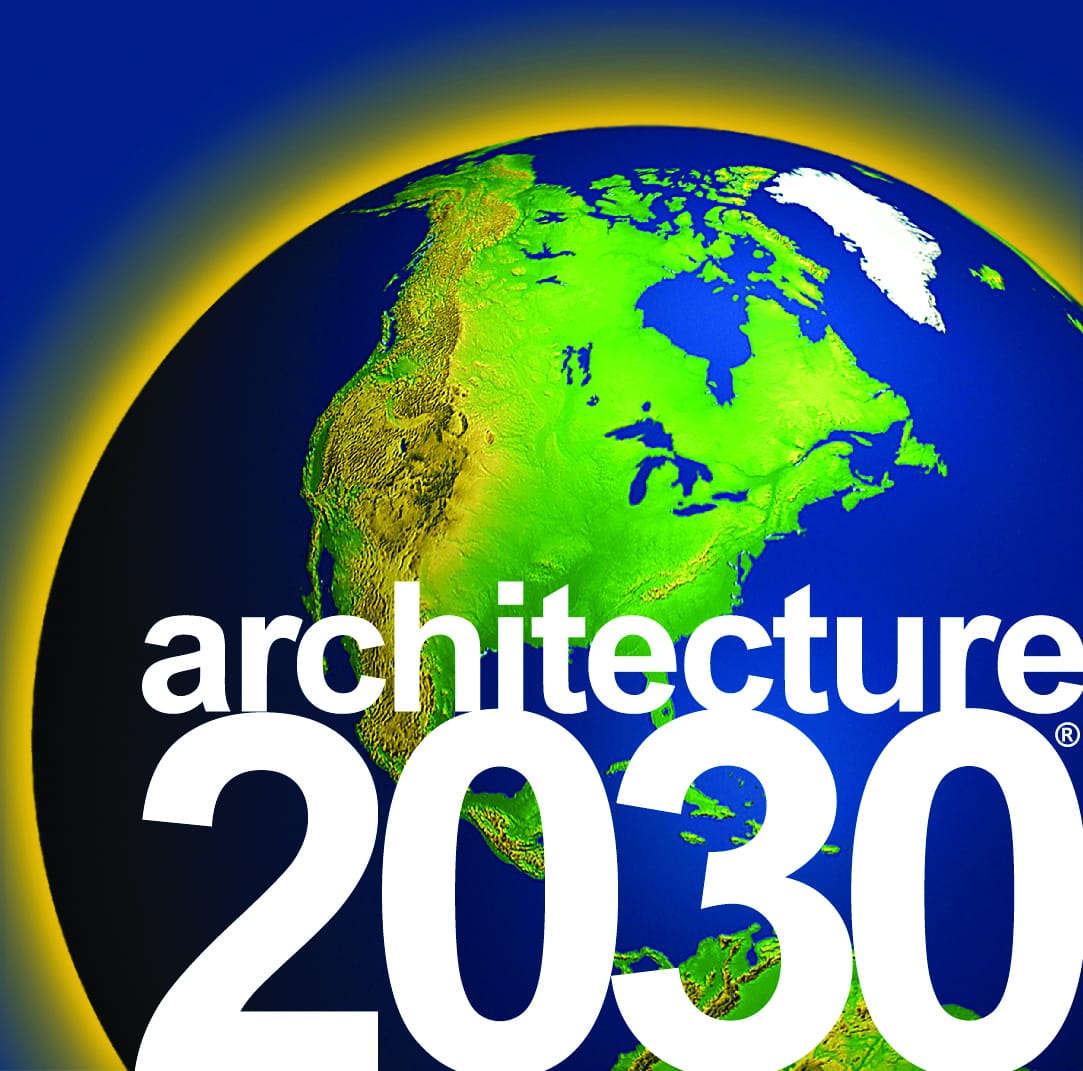Shared streets combine cycling, pedestrians, social activities, parking, and local car traffic to create a shared public space.
Eliminating the traditional segregation of motor vehicles, pedestrians and cyclists can create a shared and more vibrant streetscape. Conventional devices such as curbs, signs and signals are replaced with an integrated, people-oriented public space that encourages distinctiveness, social interaction, walking, cycling, universal accessibility, and reduced traffic speeds.
Shared Streets generally contain similar characteristics:
- Curb-free paving surface – no street level differences.
- Signage – minimal road signage and fixtures.
- Street gateway – a transition element encouraging speed reductions.
- Tactile paving – delineates use.
- Reduced traffic speeds – visual street narrowing, street trees, landscaping, changes in materials and colors.
Note: Design streets to accommodate safe and unrestricted passage for the disabled.
For more information, see the 2030 In-Depth Information Pages under Tools + Resources.

